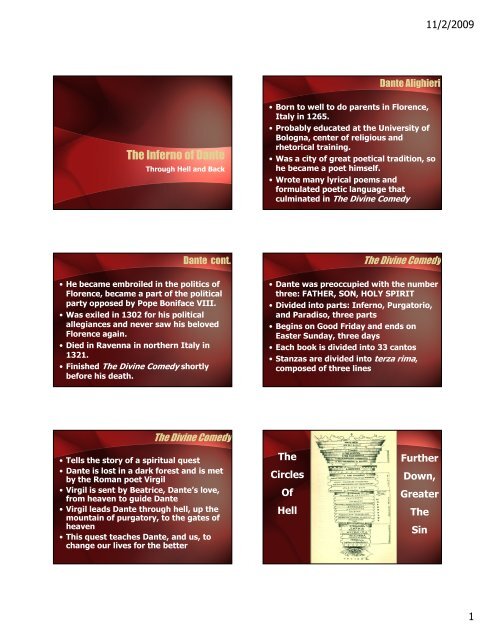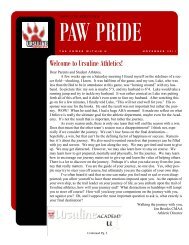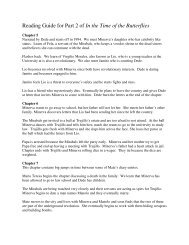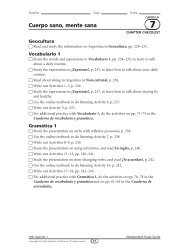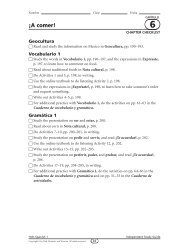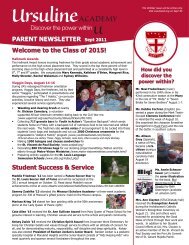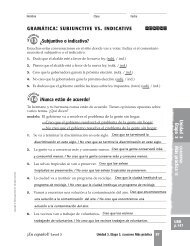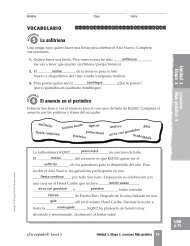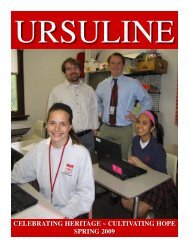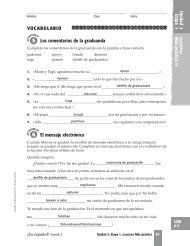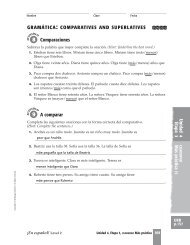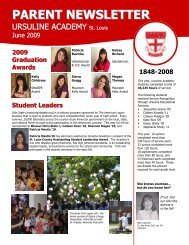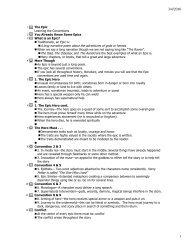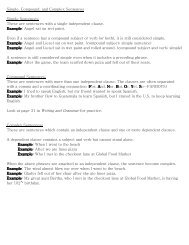Create successful ePaper yourself
Turn your PDF publications into a flip-book with our unique Google optimized e-Paper software.
11/2/2009<br />
<strong>Dante</strong> Alighieri<br />
<strong>The</strong> <strong>Inferno</strong> <strong>of</strong> <strong>Dante</strong><br />
Through Hell and Back<br />
• Born to well to do parents in Florence,<br />
Italy in 1265.<br />
• Probably educated at the University <strong>of</strong><br />
Bologna, center <strong>of</strong> religious and<br />
rhetorical training.<br />
• Was a city <strong>of</strong> great poetical tradition, so<br />
he became a poet himself.<br />
• Wrote many lyrical poems and<br />
formulated poetic language that<br />
culminated in <strong>The</strong> Divine Comedy<br />
<strong>Dante</strong> cont.<br />
<strong>The</strong> Divine Comedy<br />
• He became embroiled in the politics <strong>of</strong><br />
Florence, became a part <strong>of</strong> the political<br />
party opposed by Pope Boniface VIII.<br />
• Was exiled in 1302 for his political<br />
allegiances and never saw his beloved<br />
Florence again.<br />
• Died in Ravenna in northern Italy in<br />
1321.<br />
• Finished <strong>The</strong> Divine Comedy shortly<br />
before his death.<br />
• <strong>Dante</strong> was preoccupied with the number<br />
three: FATHER, SON, HOLY SPIRIT<br />
• Divided into parts: <strong>Inferno</strong>, Purgatorio,<br />
and Paradiso, three parts<br />
• Begins on Good Friday and ends on<br />
Easter Sunday, three days<br />
• Each book is divided into 33 cantos<br />
• Stanzas are divided into terza rima,<br />
composed <strong>of</strong> three lines<br />
<strong>The</strong> Divine Comedy<br />
• Tells the story <strong>of</strong> a spiritual quest<br />
• <strong>Dante</strong> is lost in a dark forest and is met<br />
by the Roman poet Virgil<br />
• Virgil is sent by Beatrice, <strong>Dante</strong>’s love,<br />
from heaven to guide <strong>Dante</strong><br />
• Virgil leads <strong>Dante</strong> through hell, up the<br />
mountain <strong>of</strong> purgatory, to the gates <strong>of</strong><br />
heaven<br />
• This quest teaches <strong>Dante</strong>, and us, to<br />
change our lives for the better<br />
<strong>The</strong><br />
Circles<br />
Of<br />
Hell<br />
Further<br />
Down,<br />
Greater<br />
<strong>The</strong><br />
Sin<br />
1
11/2/2009<br />
Hell<br />
Purgatory and Heaven<br />
• <strong>The</strong> gravity <strong>of</strong> the sin correlates with<br />
which circle the sinner is in<br />
• All <strong>of</strong> <strong>Dante</strong>’s enemies who were<br />
responsible for his exile found a place<br />
• Each circle has it’s unique punishment<br />
for the sin<br />
• Lesser sins are separated from greater<br />
sins by the Wall <strong>of</strong> Dis, the bloody river<br />
Phlegethon to finally Lucifer himself<br />
• Purgatory is set up the mirror <strong>of</strong> hell,<br />
worst sins at bottom, lesser sins at the<br />
top<br />
• You climb the mountain <strong>of</strong> purgatory<br />
and reach redemption at the top: the<br />
Gates <strong>of</strong> Heaven<br />
• Paradise: <strong>Dante</strong> sees the angels and<br />
saints, Virgin Mary, God, and Beatrice<br />
• Goes back to earth renewed in his quest<br />
for redemption<br />
Allegory<br />
Imagery<br />
• Discussion <strong>of</strong> one subject by disguising<br />
it as another, which resembles the first<br />
in some striking way<br />
• It teaches some kind <strong>of</strong> moral lesson,<br />
uses the visible to express and explain<br />
the invisible<br />
• Can be read on two levels, the literal and<br />
the symbolic<br />
• <strong>Dante</strong>’s <strong>The</strong> Divine Comedy, is an<br />
allegory <strong>of</strong> redemption<br />
• Use <strong>of</strong> words to create vivid pictures<br />
inside the mind <strong>of</strong> the readers<br />
• Also images can be created by appealing<br />
to the senses <strong>of</strong> the reader<br />
• <strong>Dante</strong> uses images so that we can follow<br />
him through his journey into the pits <strong>of</strong><br />
hell<br />
• Tries to give us sights and sounds that<br />
are unfamiliar to us<br />
Personification<br />
• Portrayal <strong>of</strong> a concept by giving it a<br />
human identity<br />
• Look at the punishment <strong>of</strong> each sin, the<br />
punishment correlates with the sin<br />
perfectly<br />
• Example: <strong>The</strong> lustful were blown by<br />
their passion in life so are blown on<br />
torrential winds for all <strong>of</strong> eternity<br />
2


